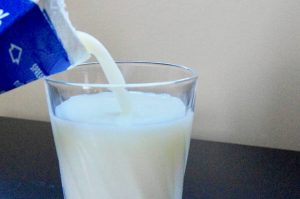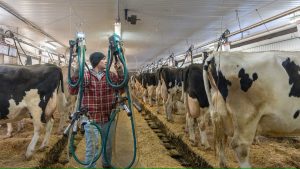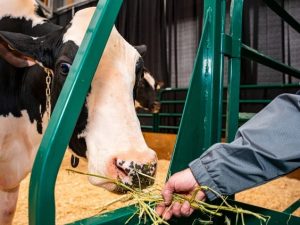
About 80 percent of western Canadian dairy herds are affected by Johne’s disease, an illness characterized by diarrhea, edema and gradual weight loss that often results in early culling.
Dr. Herman Barkema, professor of epidemiology of infectious diseases at the University of Calgary, said the Alberta Johne’s Disease Initiative has helped address the problem, but it’s important to continue participation and ideally attract other producers to get involved.
“Diseases like that, it takes, I would say not years but nearly decades to get rid of it,” Barkema said.
“So how to keep it high enough in the priority list to deal with it, that is the problem that we’re facing, because the attention now has gone from Johne’s disease initiatives to proAction, and I love proAction — I think it is unique that we have a program that is the same all over Canada, where all Canadian dairy farmers participate.”
ProAction is a national program developed by Dairy Farmers of Canada that requires producers to meet specific standards in milk quality, food safety, animal care, traceability, environment and biosecurity.
“A lot of what we have in proAction is actually based on the Johne’s disease experience and not only how we do it but also how we communicate it.”
Though disease management is covered under the biosecurity module of proAction, Barkema suggested during a Feb. 14 dairy workshop that such management could easily become a module on its own.
“I think we need to really scratch our head and see how we can voluntarily get disease control programs be part of it.”
He said Alberta’s Johne’s initiative is a good program that guides producers in risk assessment and preventive measures.
He and his colleagues did a study to see if program participation had economic benefits for the dairy farmers involved. They found that farms participating in the initiative were able to decrease Johne’s prevalence in their herds each year, in part through management changes to calving pens, calf liquid diets and separation of cows and young stock.
The illness is not limited to dairy cattle. According to data from the Beef Cattle Research Council, an estimated one to two percent of mature Canadian beef cows may be infected with Johne’s, while two to nine percent of dairy cows may have it.
“The difference in incidence rates between beef and dairy herds may be related to differences in calf management and because beef cattle generally range over larger areas and have less exposure to other cattle’s feces than dairy cattle,” the research council said in a 2018 report.
Johne’s is caused by the bacterium mycobacterium avium paratuberculosis (MAP), which can spread through colostrum, milk and manure. Although vaccines can reduce bacterial shedding, they do not prevent infection and there are no antibiotics to effectively treat it. The illness might not be evident until full-blown signs appear, usually in the form of persistent diarrhea and weight loss. That means many more animals can be infected before a problem is identified.
However, recent research through a Beef Science Cluster project at the University of Guelph shows “significant progress towards a better diagnostic test to accurately identify MAP-infected animals in the very early stages of disease.”

























